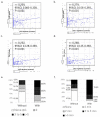Factors Related to Sleeping Disorder Due to Pruritus in Patients with Chronic Liver Disease
- PMID: 34657905
- PMCID: PMC8580778
- DOI: 10.2169/internalmedicine.7129-21
Factors Related to Sleeping Disorder Due to Pruritus in Patients with Chronic Liver Disease
Abstract
Objective This study evaluated cases of pruritus, which is known to be associated with sleep disorder, in chronic liver disease (CLD) patients. Methods Questionnaires were given to 339 enrolled CLD outpatients in winter (November 2019 to March 2020) and again in summer (April to October 2020) (median interval: 104 days). Relative changes in symptoms shown by a visual analogue scale (VAS) and Kawashima's pruritus score between winter and summer were evaluated in Study 1 (n=199), while Study 2 examined the clinical features of patients with sleep disorder based on the results of the second questionnaire (n=235, median age 70 years old; 141 men, liver cirrhosis 37%). Results Study 1. There was a significant relationship in VAS between daytime and nighttime for each season, as well as between winter and summer for each time period (p<0.001). A comparison of Kawashima's pruritus scores for the daytime and nighttime showed no significant seasonal differences (p=0.436 and 0.828, respectively). When Kawashima's score increased, so did the average VAS for both daytime (0:1:2:3:4=0.4±0.2:1.4±0.9:3.0±1.8:5.9±2.1:6.2±2.3) and nighttime (0:1:2:3:4=0.3±0.1:1.4±1.5:3.5±2.3:6.7±2.6:6.9±1.8) (p<0.001 for both). Study 2. Twenty subjects (8.5%) complained of sleep disorder. An elevated FIB-4 index (≥3.07) showed a good predictive value for sleep disorder (p<0.01). The cut-off for the daytime and nighttime VAS values for existing sleep disorder were 1.6 [area under the curve (AUC) 0.901] and 3.4 (AUC 0.931). The respective sensitivity, specificity, and positive and negative predictive values for sleep disorder based on Kawashima's score (≥2) were 0.85, 0.28, 0.10, and 0.95 for the daytime and 1.00, 0.29, 0.12, and 1.00 for the nighttime. Conclusion Intervention against pruritus is recommended in CLD patients with a high Kawashima's score (≥2) in any season, especially with an elevated FIB-4 index.
Keywords: FIB-4 index; chronic liver disease; nalfurafine hydrochloride; pruritus; quality of life.
Conflict of interest statement
Figures





Similar articles
-
Shorter pruritus period and milder disease stage are associated with response to nalfurafine hydrochloride in patients with chronic liver disease.Sci Rep. 2022 May 4;12(1):7311. doi: 10.1038/s41598-022-11431-1. Sci Rep. 2022. PMID: 35508514 Free PMC article.
-
Pruritus is common in patients with chronic liver disease and is improved by nalfurafine hydrochloride.Sci Rep. 2021 Feb 4;11(1):3015. doi: 10.1038/s41598-021-82566-w. Sci Rep. 2021. PMID: 33542298 Free PMC article.
-
Predictors of pruritus in patients with chronic liver disease and usefulness of nalfurafine hydrochloride.Hepatol Res. 2018 Jan;48(1):45-50. doi: 10.1111/hepr.12894. Epub 2017 Apr 19. Hepatol Res. 2018. PMID: 28322485
-
Sleep Disorders, Restless Legs Syndrome, and Uremic Pruritus: Diagnosis and Treatment of Common Symptoms in Dialysis Patients.Am J Kidney Dis. 2017 Jan;69(1):117-128. doi: 10.1053/j.ajkd.2016.07.031. Epub 2016 Sep 29. Am J Kidney Dis. 2017. PMID: 27693261 Free PMC article. Review.
-
Managing pruritus in chronic liver disease: An in-depth narrative review.Clin Liver Dis (Hoboken). 2024 Jun 12;23(1):e0187. doi: 10.1097/CLD.0000000000000187. eCollection 2024 Jan-Jun. Clin Liver Dis (Hoboken). 2024. PMID: 38872783 Free PMC article. Review. No abstract available.
References
-
- Pisoni RL, Wikström B, Elder SJ, et al. . Pruritus in haemodialysis patients: International results from the Dialysis Outcomes and Practice Patterns Study (DOPPS). Nephrol Dial Transplant 21: 3495-3505, 2006. - PubMed
-
- Elder SJ, Pisoni RL, Akizawa T, et al. . Sleep quality predicts quality of life and mortality risk in haemodialysis patients: results from the Dialysis Outcomes and Practice Patterns Study (DOPPS). Nephrol Dial Transplant 23: 998-1004, 2008. - PubMed
-
- Montagnese S, Nsemi LM, Cazzagon N, et al. . Sleep-wake profiles in patients with primary biliary cirrhosis. Liver Int 33: 203-209, 2013. - PubMed
-
- Seki T, Awamura S, Kimura C, et al. . Pharmacological properties of TRK-820 on cloned mu-, delta- and kappa-opioid receptors and nociceptin receptor. Eur J Pharmacol 376: 159-167, 1999. - PubMed
MeSH terms
LinkOut - more resources
Full Text Sources
Medical
Miscellaneous

